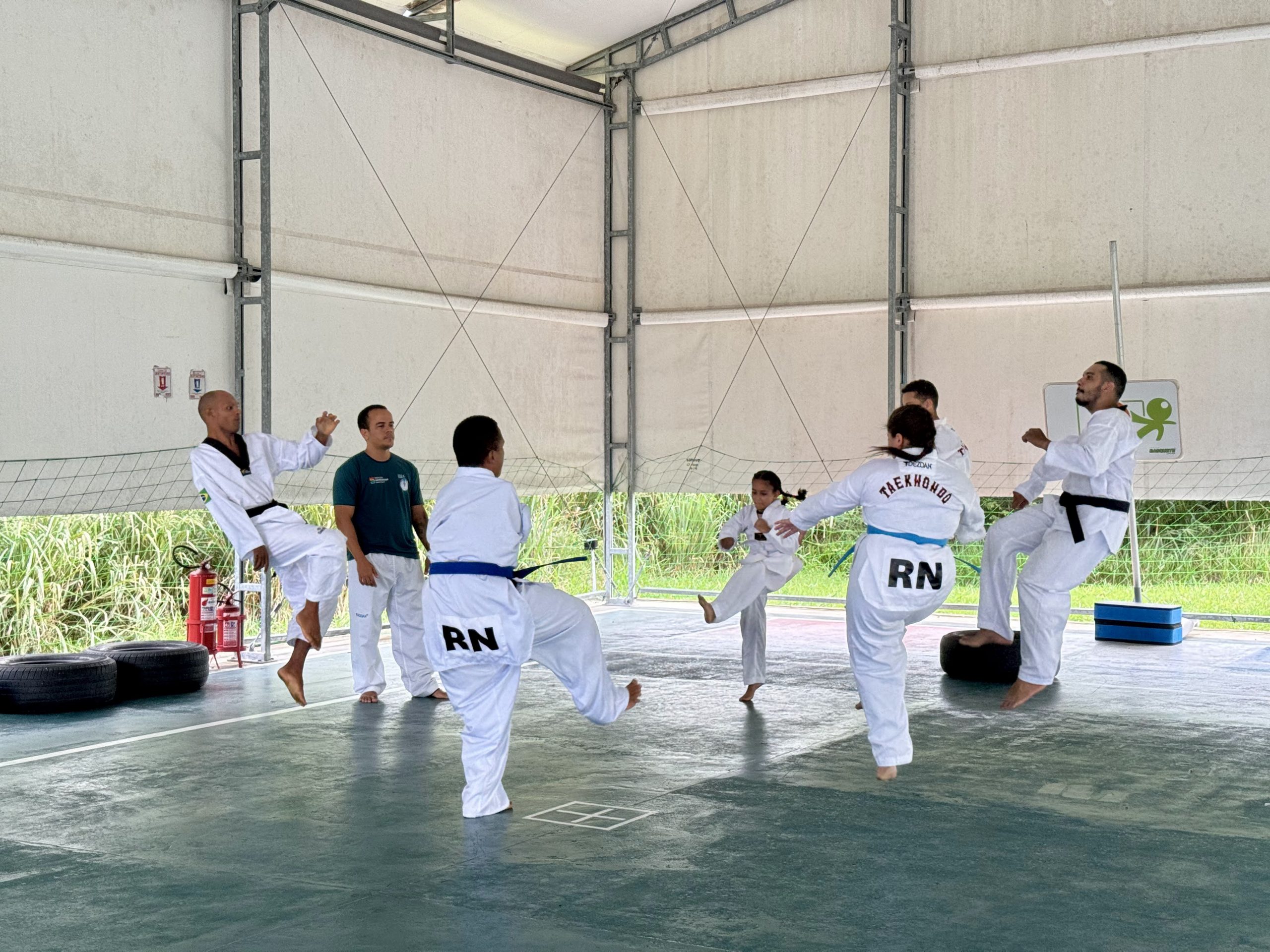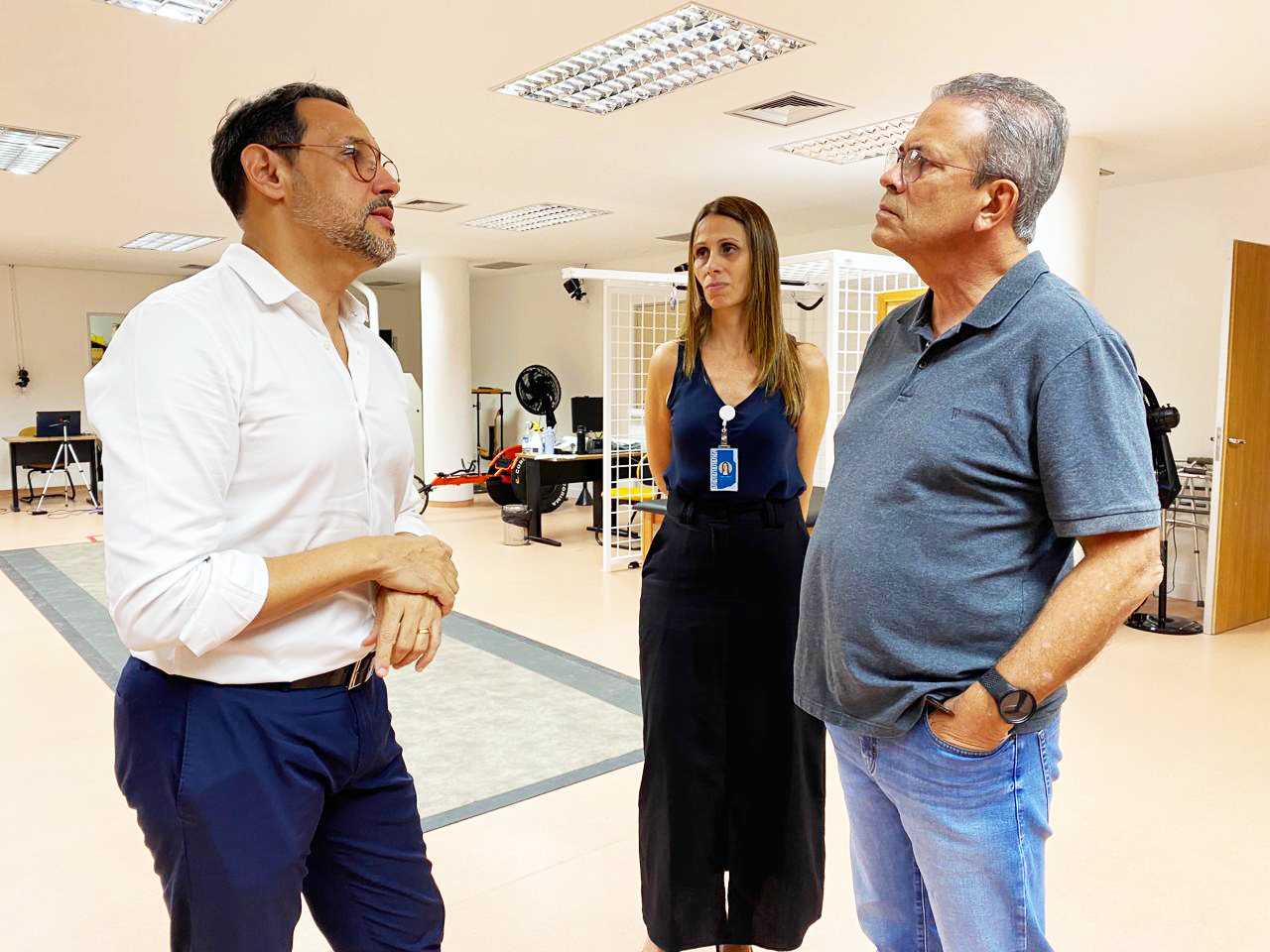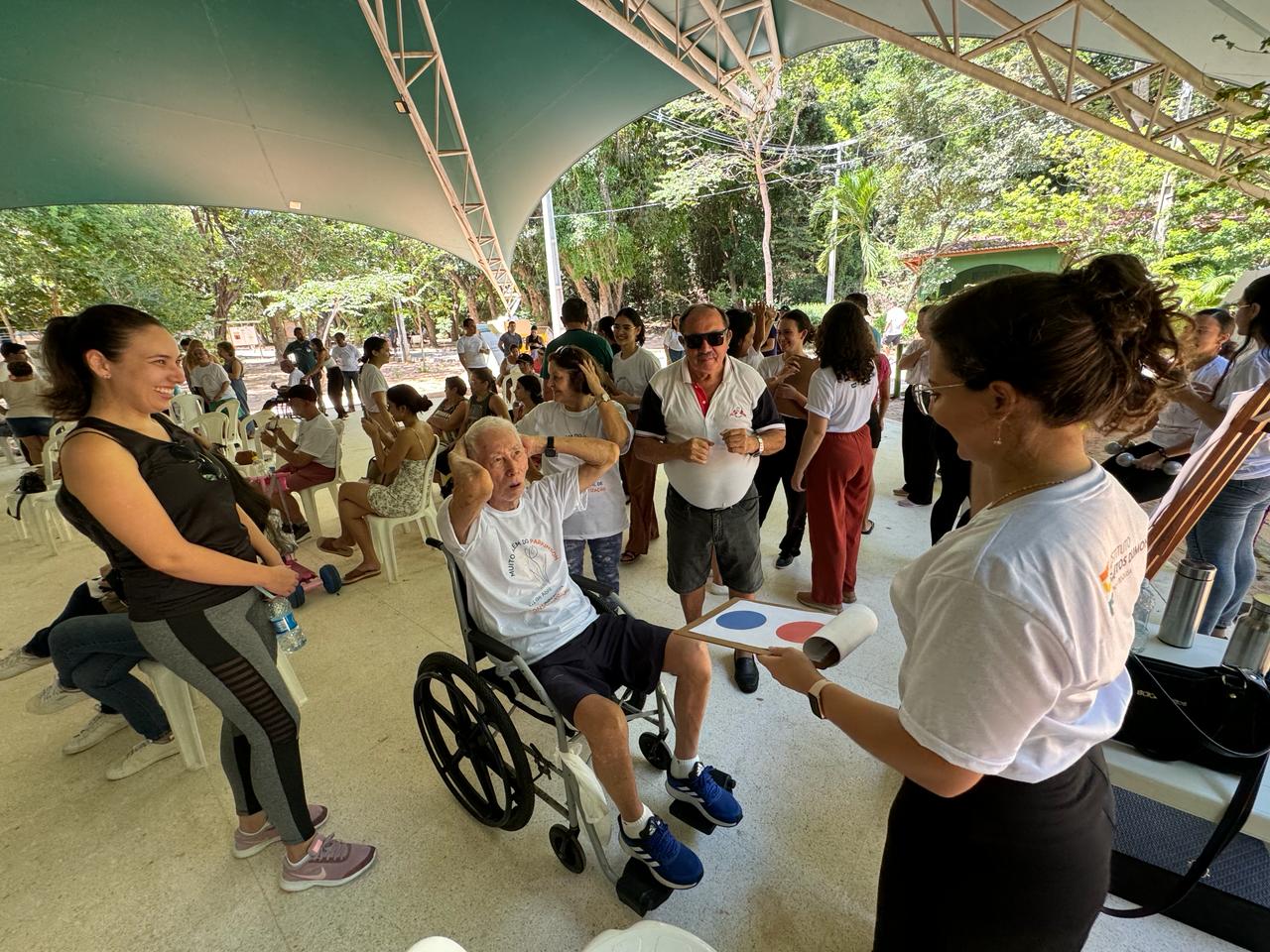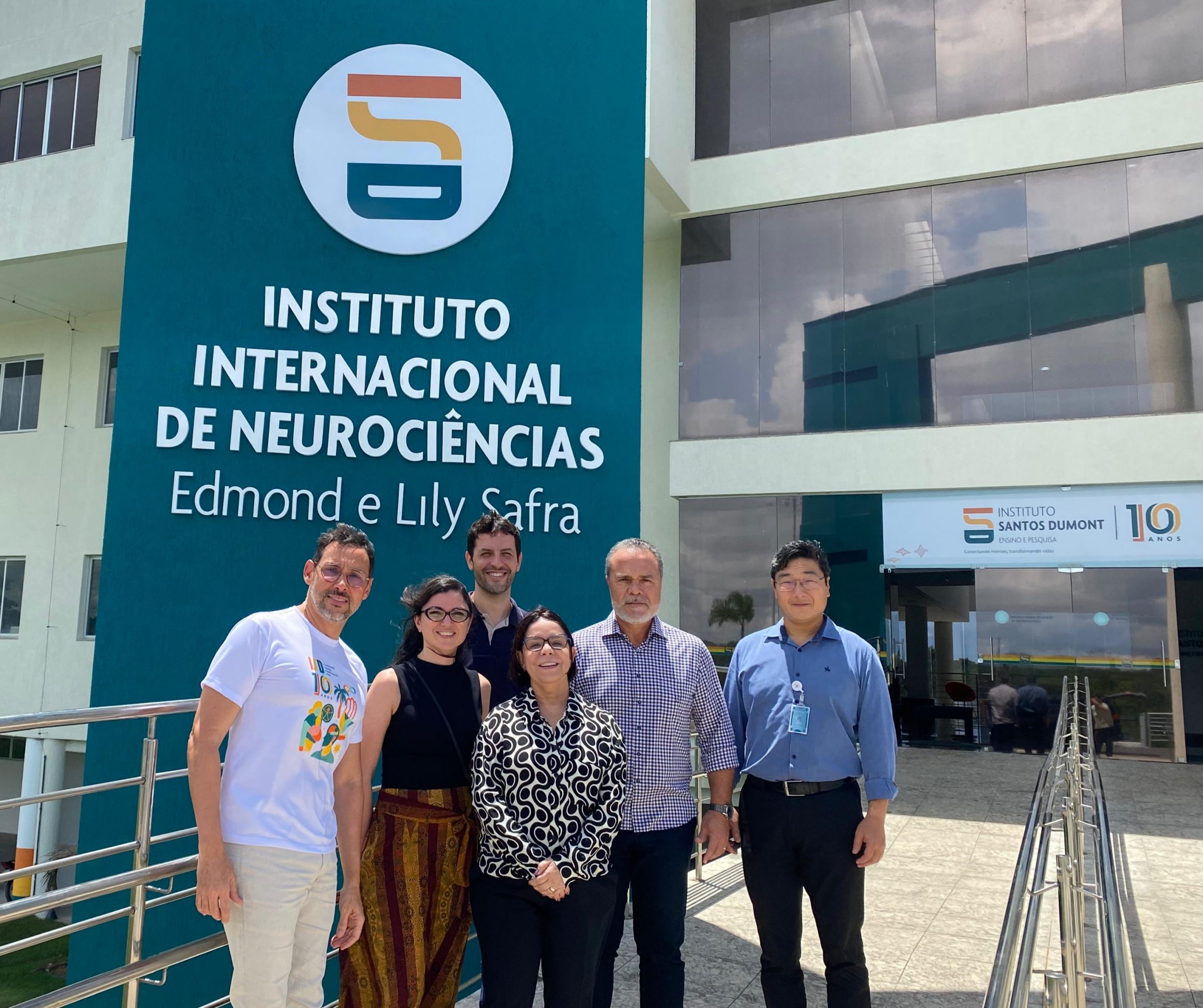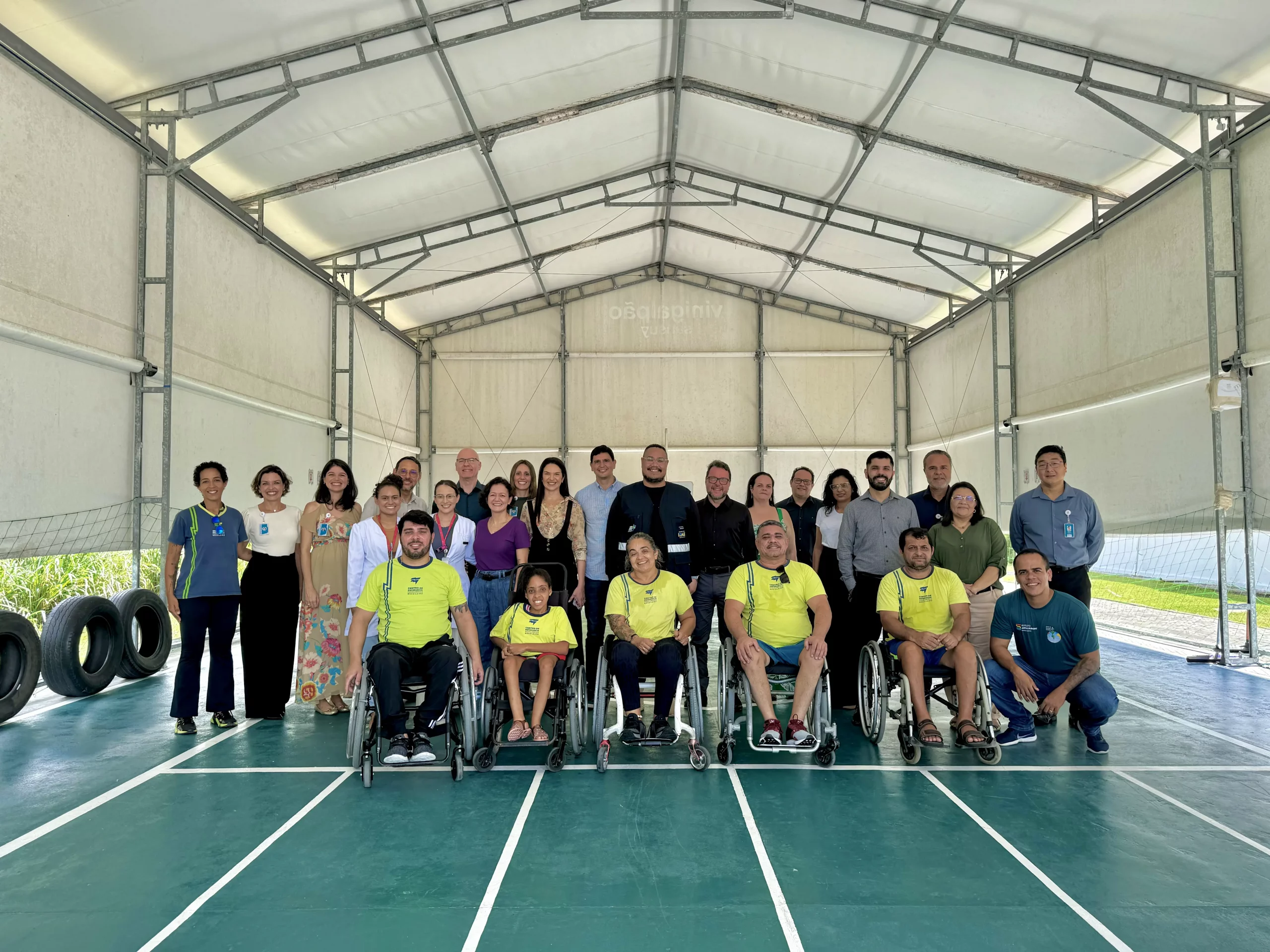- Rehabilitation
- Brain-Brain Interface
- Prosthetics and orthotics
- Bicompatibility
- Neurodegenerative Diseases
- Neurodevelopmental Diseases
- Psychiatric illnesses
- Cognition
- Computational Neuroscience
- Biological signal processing
Brain-Brain Interface
This research line consists on a entirely new approach for the use of Brain-Machine Interface (BMI). In the Brain-Brain Interface (BBI), micro electrodes are implanted in the brain, in regions related to the sensorimotor perception. They allow the real time transference of tactile and visual-motor information. BBI can be applied to other systems, such as the transference of information from the hippocampus related to memory.
BBI has the potential to develop a channel of communication between subjects for many uses and applications. However, what properties will emerge from this new system? What changes in the brain of the subjects from the moment they start to cooperate through a BBI in order to reach a common behavioral goal? This line of research aims to investigate the emerging properties of this new system and its computational and biological characteristics resulting from the interconnection of brains.
On the computational perspective, many configurations of the neural networks can be tested in order to obtain a robust code that allows the electrical brain activity of a subject to serve information for one or more individuals. Other than that, new neuroprosthetic devices can be developed, and the effects of the cortical neuroplasticity associated with the use of these devices can be evaluated.
Biocompatibilty
The use of neural prostheses has been increasingly widespread due to its promising application in Brain-Machine Interface systems. Such systems aim at the rehabilitation of patients with spinal cord injury or the treatment of pathologies of neurological origin, such as epilepsy, chronic pain and Parkinson’s disease.
However, the mechanisms involved in the neural tissue response to the electrode are yet to be well established, since the neural prosthesis, although made with biocompatible materials, is a stranger to the organism. Other than that, a important prerequisite of the neural prostheses is to obtain and maintain a stable signal in the Central Nervous System for a long period of time without causing structural, cellular and metabolic alterations that might compromise the device’ performance and/or result on tissue degeneration around the implant of the electrode.
This way, the biocompatibility research line aims to investigate the tissue response to the neural device. Recent studies have shown that cells residing in the Central Nervous System, such as microglia and astrocytes, have an important role on the inflammatory response to the implant. Nonetheless, it is yet to be established which metabolites these cells might produce, and what are the strategies that can be used in order to obtain a long-lasting signal capture from the neural prostheses. Another interesting aspect is the evaluation of the tissue response to different types of biocompatible materials in different regions of the Central Nervous System.
Neurodegenerative Diseases
These are chronic disorders characterized by the progressive death of brain cells. The two most common neurodegenerative diseases in the world are Alzheimer’s and Parkinson’s.
Parkinson’s Disease is the second most common neurodegenerative disease in the world, affecting 1% of the population over 60 years old. Its etiology and pathophysiology are still poorly understood. In this disorder, there is the progressive loss of brain cells that produce the dopamine neurotransmitter. Dopamine modulates the activity of the basal ganglia-thalamus-cortex circuit, a network involved in motor control.
Therefore, Parkinson’s is defined as a motor dysfunction with three cardinal symptoms: resting tremor, muscle stiffness, and slowness of movement (bradykinesia). However, many non-motor symptoms, such as constipation, urinary dysfunction, sleep disturbances, depression and cognitive decline are usually present, some of which are observed even before the manifestation of motor symptoms.
There is no cure for Parkinson’s. Up to this moment, there are no therapeutic strategies developed that are capable of reversing or slowing down the progression of the disease.The available treatments are capable of relieving some of the symptoms, but its chronic use has many collateral effects.
In this context, the Santos Dumont Institute develops projects that aim to characterize the electrophysiologic, molecular and histologic alterations related to Parkinson’s disease. Other than that, the Institute also develops projects that aim to evaluate the chronic and acute effects of alternative treatments to the condition, such as spinal stimulation, and compares it to many treatments currently used, such as the administration of levodopa and deep brain stimulation.
Neurodevelopmental Diseases
The Zika virus epidemic that happened between 2014-2016 led to a serious threat on the socioeconomic sphere, specially due to its excessive demand that fell over part of the most vulnerable population that are users of the health services, making a big impact on the public health system. The more serious cases of Zika progress to complications in the Central Nervous System, such as microcephaly in babies of mothers that had Zika during pregnancy.
The means by which the Central Nervous System is affected in many of the patients are still not well understood. It is estimated that more than 4 thousand people were born with microcephaly due to the congenital infection of the Zika virus, with different degrees of manifestation of the symptoms.
In view of this scenario, we believe in the urgency of developing scientific research about practices that can improve the quality of life of this generation of children. The Santos Dumont Institute counts with its two units, the Center of Education in Health Anita Garibaldi (Anita) and the Edmond and Lily Safra International Institute of Neurosciences (IIN-ELS) to, together, study and propose possible interventions capable of discovering new perspectives for the treatment and improvement of the life quality of the children born with the syndrome.
Psychiatric Diseases
The neurobiology adjacent to these diseases is still very little known, which makes it difficult to develop new therapies. At the Santos Dumont Institute, we develop researches that aim to study the electrophysiological alterations in different cortical and subcortical structures on different psychiatric disorders, such as anxiety, mania or schizophrenia. These projects also involve the evaluation of the use of neuromodulation techniques as therapeutic strategies for these diseases.
Cognition
The cognitive neurosciences aims to comprehend the neural basis of cognitive phenomenons such as learning, perception, decision making and social interactions. At the Santos Dumont Institute, we study how the neural networks broadly distributed on the brain cortex discriminate the tactile stimulus in a precise way in a short period of time, coding and processing the received stimulation.
Other than that, there are researches developed in the social cognition field, with focus on the study of visual communication, specially on the neural mechanisms involved on the perception and discrimination of vocal stimuli. To reach such goals, we use techniques invasive of eletrphysiological registry during tactile or hearing tasks of detection and discrimination.
Computational Neuroscience
The research line of Computational Neuroscience aims to build computational models of physical and biological phenomenons observed on different neural scales. With these models, it is possible, for example, to simulate the dynamic of the ionic channels and synapsis, the potential evolution of action in one or many neurons, the information flow of a neural network or even so the integration of large neural populations.
This way, computational neuroscience contributes to the comprehension of the present mechanisms involved in neural systems, as well as with the creation and tests of new hypotheses. This is a very interdisciplinary research line that requires constant interaction between professionals of the human sciences, applied and biological sciences in order to improve these models.
The platform of development is mostly the computer, which is complemented by graphic units of parallel processing, programmable integrated circuits and robots. In the field of computational neuroscience, there are works developed on themes such as Artificial Intelligence (A.I.), Machine Learning, Cognitive Science and Consciousness.
Biological Signal Processing
Biological signal processing consists of the application of mathematical and computational tools over an object that in that case, are the biological signals. All living creatures are also physical entities, and it is possible to perceive biological functions observing physical phenomenons. For example, the variation of the electric potential of the heart during a long period of time is a biological sign and, if it is measured and represented graphically, it is called an electrocardiogram.
In the same way, it is possible to measure the electric potential of the brain activity, and that’s what we call an electroencephalography (EEG). Many mathematical tools can be used in order to extract information from the EEG, and that makes it possible, for exemplo, to infer if someone is awake or asleep, in which sleep phase they are in, or even if a patient is in a coma or brain death state.
Recently, signal processing techniques have been requested to make interactions between individuals and machines, using only brain electric signals. This technique is known as Brain-Machine Interface, and has a great application potential not only for people with disabilities, but also to create new means of interaction with computers and possibly attributing new abilities to humans.
Currently, the processing of biological signals is a discipline that arouses interest in many knowledge areas, such as Biomedical Engineering, Biomedicine and Medicine, that have experienced many quick advancements and opportunities in that area.


